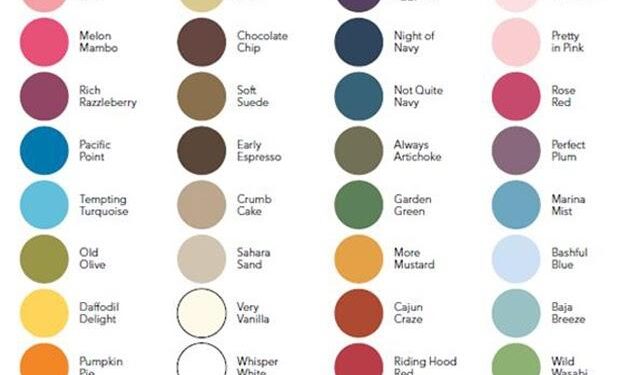Revolutionary Discovery of a New Color: Expanding the Horizons of Human Perception
In an extraordinary advancement that reshapes our comprehension of color perception, researchers have introduced a new hue previously thought to be unattainable within the visible spectrum. This remarkable finding, detailed in a recent scientific publication, is based on innovative methods that challenge conventional principles governing visual experience. By utilizing cutting-edge techniques that stretch the boundaries of traditional color theory, scientists have not only broadened our understanding of color but also paved the way for deeper investigations into the intricacies of human vision. As this discovery reverberates through artistic, design, and scientific communities, experts are left to contemplate the essence of color and its significance in shaping our reality.
Groundbreaking Vision Techniques Reveal New Color
A recent study has unveiled a groundbreaking hue that defies established limitations on human sight. By employing innovative strategies to manipulate light perception, researchers have successfully created a shade once considered impossible. Through advanced imaging technologies and a reexamination of foundational color theories, this team has managed to alter visual norms significantly—resulting in an exceptionally vibrant color existing beyond traditional spectrums. The ramifications extend well beyond mere aesthetics; they could potentially impact diverse fields such as art creation, design innovation, and even medical technology.
This newly discovered hue is characterized by its unique blending of existing wavelengths which creates an immersive visual experience akin to floating between various shades. Key features include:
- Enhanced Visual Experience: This new shade offers depth and vibrancy absent from standard spectrums.
- Diverse Applications: It holds potential for transforming industries ranging from virtual reality experiences to photographic arts.
- Psycho-emotional Effects: It may evoke novel emotional responses beneficial for psychological therapies.
The scientific community continues to explore the implications stemming from this revolutionary breakthrough as they delve deeper into understanding how we perceive colors—a journey promising exciting developments ahead.
Impact on Art and Design Industries
The introduction of this unprecedented hue could dramatically transform both art and design sectors in numerous ways. Artists often depend on established palettes to elicit emotions or convey messages; however, with access to an entirely new shade never before seen by human eyes, creative possibilities become virtually limitless. This groundbreaking discovery may inspire artists to push creative boundaries further than ever before—potentially leading to entirely new styles or movements across various mediums including painting, fashion design, and digital artistry.
The effects will likely extend beyond individual creativity; entire industries reliant on visual appeal might undergo significant transformations as well. Consider these potential impacts:
- Branding Strategies: Companies could leverage this novel hue for differentiation within saturated markets—crafting memorable brand identities.
- Interior Spaces: Designers might redefine spatial perceptions using this unique shade—manipulating moods and experiences like never before.
- Advertising Campaigns: Marketers may harness psychological influences associated with this new color for more effective consumer engagement strategies.
A summary table below illustrates possible applications across different sectors influenced by this discovery:
| Sectors Affected | Potential Uses |
|---|---|
| Cultural Arts | Nurturing fresh artistic movements |
Future Research Directions & Applications Following Discovery
This recent breakthrough regarding color perception opens up vast opportunities for future research endeavors particularly within neuroscience and optics domains. Gaining insights into how humans interpret such unprecedented hues can lead us toward profound understandings about vision mechanisms themselves.
Researchers might investigate several areas including but not limited too:
- Neural Pathways : Examining alterations made upon current models concerning neural encoding related specifically towards colors .< / li >
- Vision Disorders : Crafting therapeutic solutions aimed at individuals suffering from deficiencies surrounding their ability perceive certain colors , utilizing newfound knowledge gained through studying ‘impossible’ shades .< / li >
- Optical Devices : Developing advanced technologies capable simulating these newly discovered hues , enhancing overall user experiences across displays & virtual environments .< / li >
Aspects reach far beyond academia/clinical practices ; potentially revolutionizing sectors like marketing/art/design altogether! Integrating such unique tones into consumer products allows businesses create compelling branding strategies captivating audiences effectively ! Future explorations should consider:
- < b >Fashion/Textile Design : Pioneering fabrics incorporating said tones redefining aesthetic standards altogether !< / li >
- < b >Architecture : Innovating building materials showcasing distinct characteristics urban settings !< / li >
- < b >Safety Systems :
Enhancing visibility signage alerts infusing distinct coloration improving public safety measures overall!
Educational institutions can utilize discoveries teaching tools courses surrounding cognitive science/perception inspiring next generation innovators explore sensory frontiers!
“Conclusion”
The revelation surrounding “impossible” colors signifies monumental progress within realms pertaining both visual perception/color science alike! By challenging conventional rules governing sight itself , researchers expand horizons regarding how we comprehend hues while simultaneously unlocking potential applications spanning multiple industries—from artistry/design all way through technological advancements & more! As exploration continues unravel complexities inherent human vision , remarkable findings beckon us reconsider limits imposed upon sensory experiences themselves inviting curiosity wonderment alike!






























